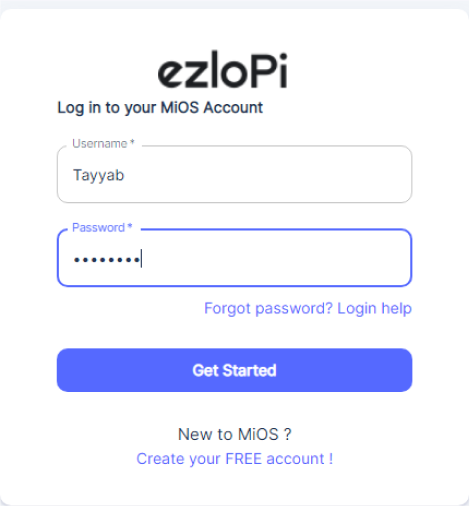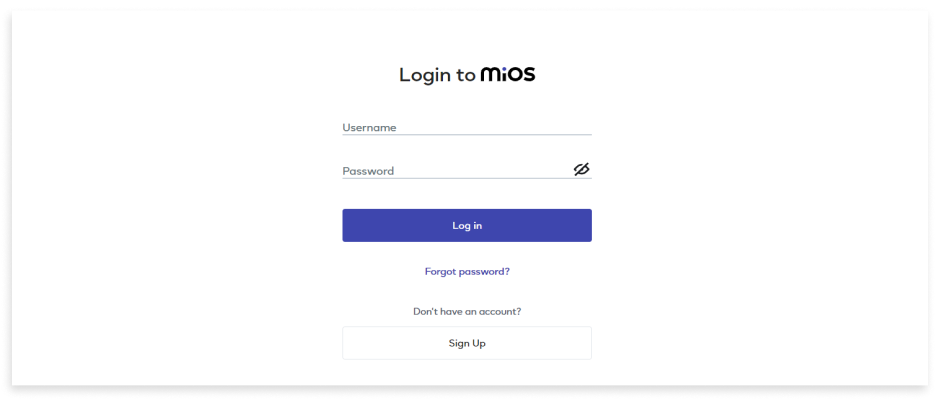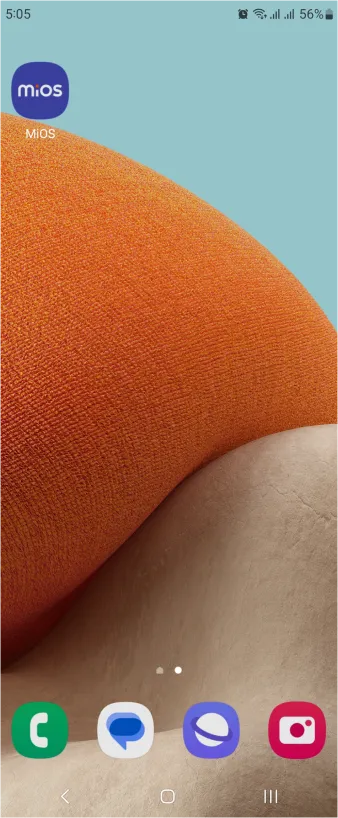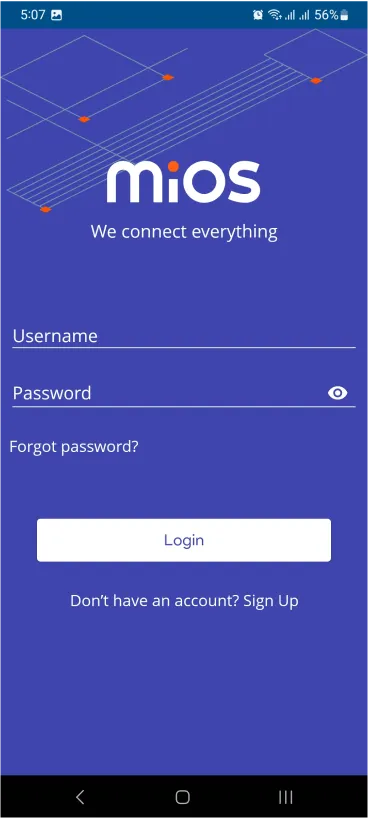
Brighten your world with EzloPi!
Make LED blink using EzloPi meshbot
The EzloPi smart devices provide automation through simple, customizable use with our open-source EzloPi platform, making daily life easier and improving human-machine interactions.
Before moving into this example, it is very important to know about the device registration, provisioning and converting the ESP32 device into an EzloPi device along with knowledge of Web Flasher, MiOS Mobile Application for Android/iOS and the MiOS Web Application.
1. About this example
The following example showcases how we can interface a button and LED with the EzloPi device and use it as a blink LED. This setup allows you to use a button to control the operational state of the LED, providing visible feedback in response to a button press. We can expand upon this foundation to create more complex and interactive applications with our EzloPi device and MiOS smart application.
2. Project Video Demonstration
Welcome to the project demonstration video section. The following video showcases the key aspects of Make LED blink using EzloPi meshbot, providing a visual walkthrough of its implementation.
3. Circuit Setup & Interfacing
The following components are required for interfacing with the EzloPi device:
- ESP32 as an EzloPi smart device.
- Button
- LED with a current limiting resistor of 82 Ohms.
The wiring diagram is represented as follows:


The following connections are made in order to complete the circuit setup:
From ESP32(30 pins) to Button:

From ESP32(30 pins) to Button:

4. Interfacing the button and LED using the EzloPi Web Flasher
Set up your device/hardware by visiting config.ezlopi.com

- Log in using the credentials which you just set earlier while signing up.

- Now, click on the Connect Device button and a pop-up window will appear.

Now, select COM Port to which your ESP32 device is connected. In our case, the COM3 port is used.
Click Connect.

- If you are new to this and it's your first time configuring, select Create new Device ID. Enter Wifi SSID and Wifi Password.
- In the Device Configuration, tab click on Digital Input.

- A Digital Input window will open for inputting the following parameters:
- Set a device name of your choosing. In our case, we set it to Button.
- Set Device subtype to Digital In Switch/ Button/ Key.
- Set OUT GPIO to 15.
- Set the default value to LOW.
- Again, In the Device Configuration, tab click on Digital Output.

- A Digital Output window will open for inputting the following parameters:
- Set a device name of your choosing. In our case, we set it to LED.
- Set Device subtype to LED.
- Set OUT GPIO to 2.
- Set the Resistor to PULL UP.
- Set the Default value to LOW.
- Then Click Apply Button.
- After clicking the apply button you can see a table of your setting in the device configuration tab.
- Press the Flash Device button.
- A window will appear on the bottom right side of the screen displaying “Please press BOOT button while flashing begins.”

- Hold the BOOT button down until the next window appears on the bottom right side of the screen which says “Installation prepared. Please release the boot button now.”

- Release the BOOT button from your ESP32 when this pop-up on the bottom right window appears.

- After some time, a popup will appear saying Device Flashed Successfully! This means that your device has been set up successfully.
5. MiOS Web Dashboard
- After configuring the controller with the EzloPi web flasher, head to ezlogic.mios.com

- Use the same credential to log in that you used for configuring the controller with the web flasher.

- As seen in the MiOS web dashboard above, the button and LED status tiles are not ON moment.
MeshBots:

- On the right side of the screen under Automation, click on MeshBots.

- On meshbot screen, click on Create new MeshBot button present on the top right corner of the screen.

- On the next screen you will see that we can create a name of our choosing, in this case we write it as Blink_LED.

- In the trigger tab you can set the TRIGGER for your device and in the ACTION tab you can set the action to be performed based on the trigger which you have created.

- In the trigger tab you can set the TRIGGER for your device and in the ACTION tab you can set the action to be performed based on the trigger which you have created.
- Set these values in TRIGGER section:
- Set Node Type to Device.
- Set the Node to Button.
- Set the Capability to Switch.
- Set the value to True.

- Set these values in the ACTION section.
- Set Node Type to Device.
- Set Controllable Type to LED.
- Set the Capability to switch.
- Set the value to true.
- Add one more Action by clicking the Add Action button.
- Set these values in the ACTION section.
- Set Node Type to Device.
- Set Controllable Type to LED.
- Set the Capability to switch.
- Set the value to false.
- Set action to Delay and Set the Delay to 2 Seconds.
- As we are executing actions sequentially and in a loop so we have to change the action sequence which is given in the top right corner in the Action tab, Change the option to Execute actions sequentially as long as previous action succeeds.

- After clicking the apply button you can see a table of your setting in the Current configuration tab.

- After clicking the save button you can see this screen on the top right corner of the screen.

- Here you can see your saved MeshBot. Now click on Dashboard.


- As seen in the MiOS web dashboard above, the blinking LED function can be seen which we have implemented through the meshbot. In the first image, we have turned on the button and LED turns on. In the second image, the button is still on but the LED is turned off because of the blink function which repeats itself after every 2 seconds as the rules we have set in the meshbot.

5. MiOS App
You can download the MIOS Android app from the Google Play Store and Apple App Store.
- After downloading the app, proceed to install the application and open it.

- Using the MIOS mobile application, create a new Ezlo Cloud account using the sign-up option. If you already have an account, you may proceed to log in.

- After successfully logging in, you will be able to see the number of controllers connected such as a lamp, fan, or any other device in the MiOS app. Tap on any controller of your desired ID:
- You will be able to see the status of your controller whether it is online or offline. Access the device dashboard, and tap the device. The following view of the dashboard will appear:

- After opening the mobile dashboard, you will be able to see the tile of your connected device.

- As we have seen above in the MIOS mobile dashboard, the blink LED function is successfully implemented according to meshbot rules.


eZlopie Products A single-channel 5V relay module $00.00

eZlopie Products Momentary switch $00.00

eZlopie Products Level Shifter Module (BSS138) $00.00

eZlopie Products ESP32
$00.00

eZlopie Products AC Lamp and Holder
$00.00












